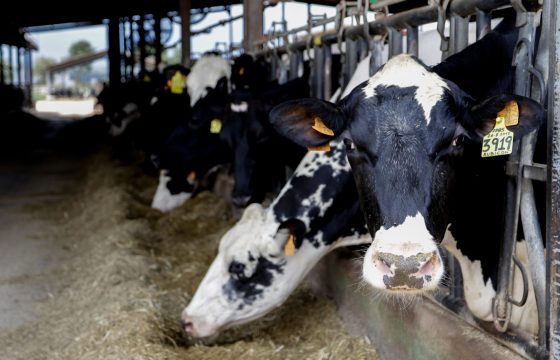NMC Symposium: A review of Paolo Moroni’s keynote about mastitis in cattle pathogens
With the National Mastitis Council (NMC) congress in Milan just around the corner, we wanted to take the opportunity to discuss with Paolo Moroni about the hot topics of the congress and hearing his point of view regarding the control of those environmental pathogens which cause mastitis in cattle.
Interview with Mr. Paolo Moroni

There is less than a month to go until the most representative global congress on mastitis in cattle.
Being aware of the large number of veterinarians attracted by this congress who are interested in milk quality, HIPRA has organized a symposium entitled “TAKE CONTROL OF STREP. UBERIS”, on 11th June.
At this symposium, we will have the opportunity to learn from Paolo Moroni (DVM, and Ph. D.; NMC member and Senior Extension Associate at the Cornell Univeristy) about the epidemiological situation regarding the causative pathogens of mastitis in cattle and what innovations there are for the control of these.
Could you help us to understand a bit more the evolution of the pathogens which caused mastitis in cattle during the last few years?
I think during the last 5 or 6 years we can feel a huge change in the epidemiology of mastitis in cattle, we came from 30 years of contagious mastitis in cattle –more Staph. aureus-. Now, the reality on big farms in the US and Europe is that we can see a huge increase in streptococci, especially uberis and dysgalactiae, but also E. coli and Klebsiella.
In the US, we are now around 20 or 21% of positive cases if you put together E. coli and Klebsiella, all strep together maybe 22 or 24% of clinical cases. There has been a huge change in the management of farms in recent years that help to explain this.
So, the big pathogens causing mastitis in cattle for you nowadays will be…
For me, of the group of gram negative are E. coli and Klebsiella, and the group of gram positive bacteria are Strep. uberis and CNS (Coagulase Negative Staphylococci)… Now that we talk about it, remember the name changed last year, and now they need to be called NAS (Non Aureus Staphylococci), not CNS….
What are, in your opinion, the most important problems farmers and vets are facing when they want to control a pathogen such as Strep. uberis?
I do not think there is only one main problem, in my opinion there is more than just one; the first and most important would be, for sure, identification. I don’t think people in the milking parlor are too much into the details when a clinical case of mastitis in cattle is detected.
The second important thing would be the treatment, generally, we use a standardized treatment in the case of mastitis in cattle, with a wide spectrum antibiotic, and we need something more specific, more targeted.
And management, we need to apply better management measures to complete a mastitis control plan. So, there will be three main problems; management -we need to keep the cow as clean as possible -, next would be identification – because in the milking parlor we need to be able to go into more detail when we are facing cases of Strep-, and the last one will be standardized treatments –we need to be more targeted-
How do you see future trends in pathogen control?
I think we will work less with contagious pathogens causing mastitis in cattle like Staph. aureus, people will need to survive with aureus on their farms. In addition, the prevalence probably will go down because the majority of these cases of mastitis in cattle are subclinical, and the farmer does not want to treat the cows.
Due to this probably we will help to continue the trend of increasing environmental pathogens –like E. coli and Strep. uberis-.
Thanks again for your time, looking forward to seeing you during the “TAKE CONTROL OF STREP. UBERIS” Symposium in Milano!


